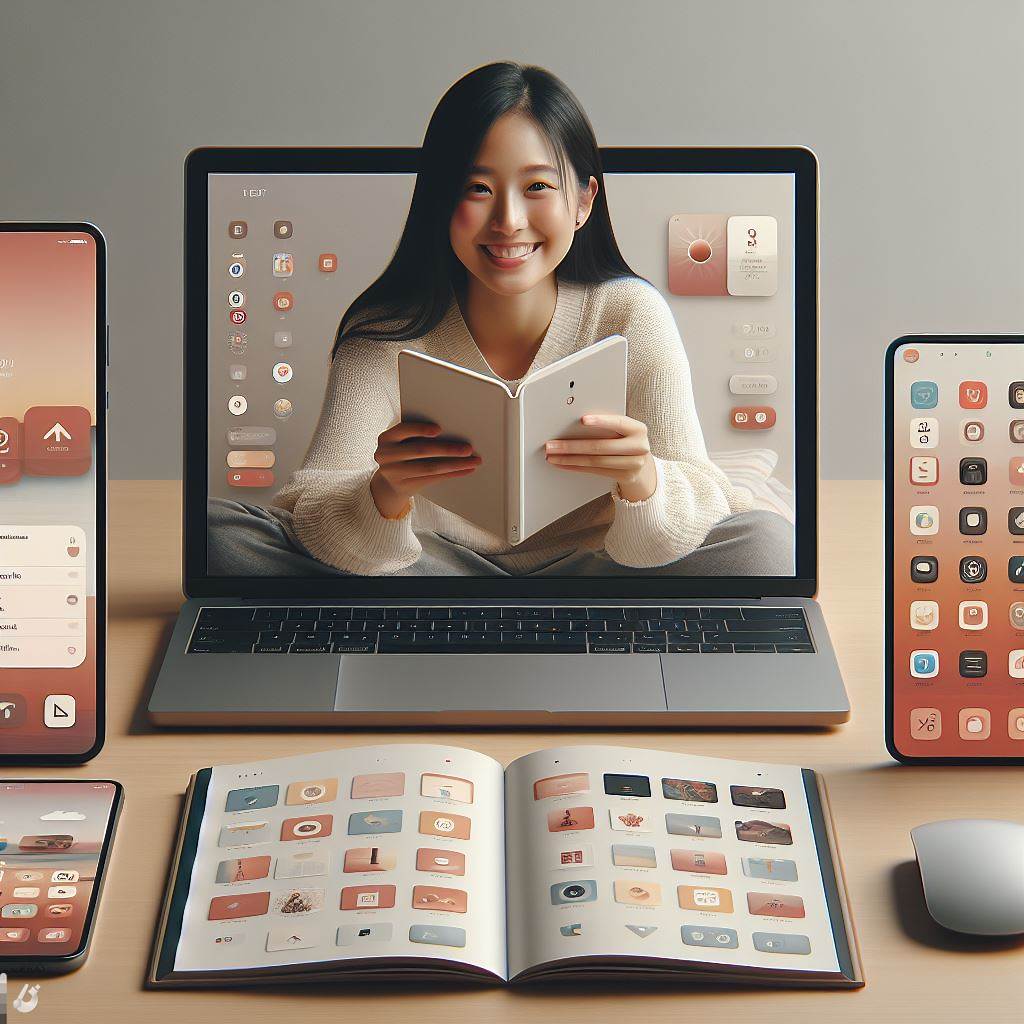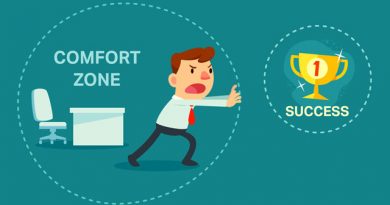Less is More: Embracing Minimalism to Achieve Clarity and Freedom in Your Life
Last Updated on December 26, 2023
Imagine a life free from clutter, both physical and mental. A life where your possessions serve a purpose, your thoughts are unburdened, and your spirit is light. This is the essence of minimalism, a philosophy that has gained traction in recent years as people seek to escape the trappings of consumerism and rediscover what truly matters.
Minimalism is not about deprivation or asceticism. It’s about intentionality. It’s about making conscious choices about what you bring into your life and what you let go of. It’s about recognizing that true happiness doesn’t come from material possessions, but from experiences, relationships, and personal growth.
In this blog post , we’ll explore the many benefits of minimalism, from the practical (reduced stress, saved money) to the profound (greater clarity, deeper connections). We’ll also offer tips on how to start decluttering your life, one step at a time.
So, if you’re feeling overwhelmed by the chaos of your life, or if you’re simply curious about how minimalism can benefit you, I invite you to read on.
Understanding minimalism and its principles
Minimalism is often misunderstood as a lifestyle of deprivation, but in reality, it is a conscious choice to live with less and create more meaning in our lives. At its core, minimalism is about simplifying our lives by removing the unnecessary and focusing on what truly matters.
One of the fundamental principles of minimalism is the idea of intentionalism. It’s about being deliberate in our choices and actions, and only surrounding ourselves with things that add value to our lives. This means letting go of possessions that no longer serve a purpose or bring us joy.
Another principle of minimalism is quality over quantity. Rather than accumulating a large quantity of things, minimalism encourages us to invest in high-quality items that will last longer and bring us more satisfaction. By choosing quality over quantity, we can create a more sustainable and fulfilling lifestyle.
Minimalism also emphasizes the importance of mindfulness and being present in the moment. By decluttering our physical and mental spaces, we can reduce distractions and focus on the present, which can lead to greater clarity and a deeper appreciation for life.
The benefits of embracing minimalism

Embracing minimalism offers numerous benefits that extend beyond having a tidy home or an organized digital life. When we let go of the unnecessary, we create space for what truly matters, allowing us to live a more meaningful and fulfilling life.
You may have heard the story about Mark Zuckerberg wearing the same grey t-shirt every day, when asked he explained why:
I really want to clear my life to make it so that I have to make as few decisions as possible about anything except how to best serve this community. There’s actually a bunch of psychology theory that even making small decisions, around what you wear or what you eat for breakfast or things like that, they kind of make you tired and consume your energy.
One of the most significant benefits of minimalism is the reduction of stress and anxiety. Clutter and excess can overwhelm our minds and make it difficult to focus. By simplifying our surroundings, we create a sense of calm and serenity, which can help alleviate stress and improve our overall well-being.
Minimalism also fosters creativity. When our physical and mental spaces are clutter-free, our minds are free to wander and explore new ideas. By removing distractions, we can tap into our creative potential and find innovative solutions to problems.
Additionally, minimalism encourages us to live in alignment with our values. By letting go of possessions that no longer align with our beliefs or goals, we can create a life that reflects our true priorities. This can lead to a greater sense of authenticity and fulfillment.
The relationship between minimalism and clarity
Clarity is a fundamental aspect of minimalism. When our physical space is cluttered, it can be challenging to focus and make decisions. The presence of excess can create mental noise and hinder our ability to think clearly. By simplifying our surroundings, we can create a clear and calm space that allows us to think more clearly and make better choices.
In addition to decluttering our physical space, minimalism also encourages us to declutter our minds. This means letting go of negative thoughts, limiting beliefs, and unhealthy attachments. By releasing mental clutter, we can create space for positive thoughts and gain clarity about our goals and aspirations.
Letting go of physical clutter
One of the first steps towards embracing minimalism is decluttering our physical space. This involves letting go of possessions that no longer serve a purpose or bring us joy.
Start by going through each room in your home and evaluating each item. Ask yourself if it adds value to your life or if it’s simply taking up space. If an item no longer serves a purpose or brings you joy, consider donating or selling it.
Another effective technique is the KonMari method, popularized by Marie Kondo. This method involves decluttering by category, starting with clothing, then moving on to books, papers, miscellaneous items, and sentimental items. By focusing on one category at a time, we can make more intentional decisions about what to keep and what to let go.
Remember, the goal is not to get rid of everything, but to curate a collection of items that truly add value to your life. Surround yourself with things that bring you joy and align with your values, and let go of the rest.
Decluttering your Digital life

In today’s digital age, decluttering our digital life is just as important as decluttering our physical space. Our devices can quickly become filled with unnecessary files, apps, and notifications, creating a digital clutter that can be overwhelming.
Start by organizing your files and folders on your computer or smartphone. Delete any files or apps that you no longer use or need. Create a filing system that makes it easy to find what you’re looking for and keep your digital space tidy.
Next, take a look at your notifications. Disable any unnecessary notifications that distract you or add unnecessary clutter to your screen. By reducing the number of notifications you receive, you can create a more focused and productive digital environment.
Lastly, take some time to evaluate your online presence. Unsubscribe from newsletters or email lists that no longer interest you. Clean up your social media accounts by unfollowing accounts that don’t bring you joy or add value to your life. By curating your online presence, you can create a digital space that reflects your values and supports your well-being.
Simplifying your daily routines and commitments
Nest area to “attack” in our pursuit of minimalism is simplifying our daily routines and commitments. Often, we fill our lives with unnecessary tasks and obligations that leave us feeling overwhelmed and drained.
Start by evaluating your daily routines. Are there any tasks or commitments that can be simplified or eliminated? Look for ways to streamline your routines and create more space in your day for rest and relaxation.
Next, take a look at your commitments. Are there any obligations that no longer align with your values or bring you joy? Consider letting go of activities or commitments that no longer serve a purpose in your life. By saying no to things that don’t align with your priorities, you can create more time and energy for the things that truly matter.
Cultivating a minimalist mindset
Practice gratitude and mindfulness. Take time each day to appreciate what you have and be present in the moment. Cultivate a mindset of abundance rather than scarcity, focusing on what you have rather than what you lack. Try this exercise: Each day in the morning or before you go to bed right down 10 things you are grateful for. This may seem a lot at first but if you start to consider things like: having running water, or watching the sunrise it’s really easy.
Let go of perfectionism and the need for external validation. Shift your focus from what others think of you to what makes you happy and fulfilled.
Minimalism and relationships: letting go of toxic people and unhealthy attachments
Evaluate your relationships and consider whether they bring you joy and support your growth. Let go of relationships that drain your energy or bring negativity into your life. Surround yourself with people who uplift and inspire you, and who share your values and aspirations.
Focus on cultivating healthy, balanced and meaningful relationships in the real world and not on social media. Would you rather have 5000 Facebook friends who like your posts or 5 close friends that you have deep conversations with and are always there for you?
Living a life of clarity and freedom by embracing minimalism
Embracing minimalism is a powerful tool for finding clarity and freedom in our lives. By letting go of the unnecessary, simplifying our surroundings, and cultivating a minimalist mindset, we can create space for what truly matters.
Minimalism is not about depriving ourselves or living in empty spaces; it’s about living with intention and purpose. It’s about curating a life that reflects our values and priorities, and letting go of anything that no longer serves us.
Through minimalism, we can reduce stress and anxiety, foster creativity, and cultivate a sense of authenticity and fulfillment. We can create a life that is aligned with our true desires and aspirations, and experience a newfound sense of clarity and freedom.
So, if you’re ready to let go of the unnecessary and embrace a simpler, more meaningful life, start your journey of self-discovery and learn how minimalism can unlock a world of clarity and freedom for you.



